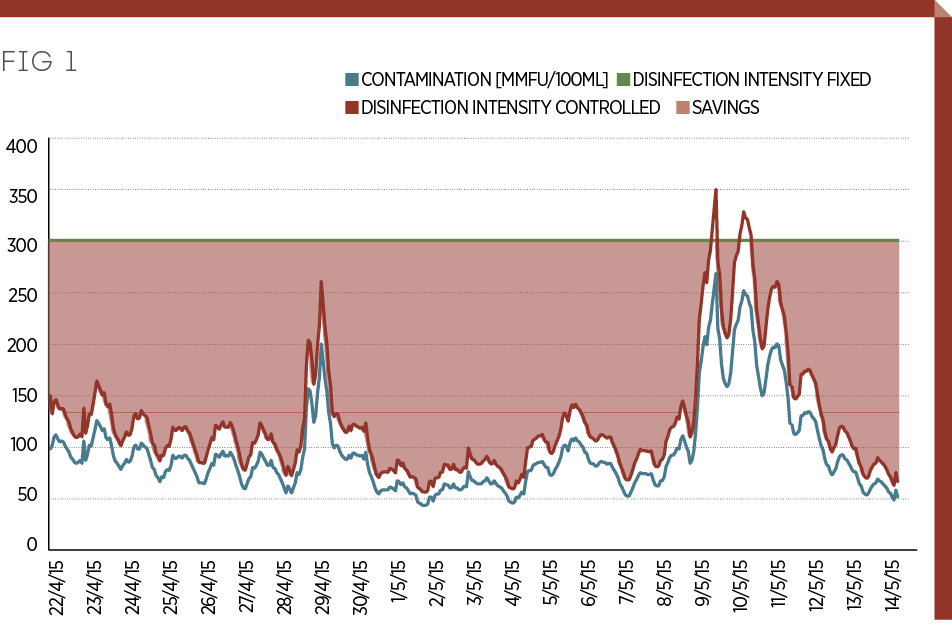VWM’s ColiMinder system allows for real-time microbial water monitoring
The ability to measure exact contamination levels in real time means water can be cleaned in a sustainable, low-impact way

Monitoring the microbial balance of water in real time allows for significant cost savings
A breakthrough technology for microbiological online monitoring is paving the way for a technological leap in the water sector. This new technology changes the measurement of bacterial contamination from a 24-hour lab procedure to a 15-minute, fully automated measurement, enabling microbiological online monitoring and process control.
Microbiological contamination is one of the most important quality parameters of water. Without the ability to perform microbiological online monitoring, all existing processes in water treatment addressing microbiological contamination have to be built as oversized and rigid processes. These processes are, of course, neither efficient nor sustainable. They require extensive amounts of chemicals and energy in order to guarantee desired output quality, without any knowledge of the actual contamination levels they have to address. Solving this problem is a huge leap forward for the industry.
Microbiological contamination is now available as a real-time parameter, measured automatically
Petri dish to IoT
In contrast to traditional lab methods, which use the formation of colonies to measure contamination, the new technology works by measuring metabolic (enzymatic) activity related to the respective target organism. Both methods (traditional cultivation and enzymatic) use genuine properties of the living organisms as a measure, which differentiates this new technology from other methods developed for rapid microbiological contamination measurement.
The short measurement time of 15 minutes is extremely important, as it allows the measurement device – named ColiMinder – to be deployed not only in process monitoring, but also in process control.
Microbiological contamination is now available as a real-time parameter, measured automatically. The measurement device is controllable through an internet connection, the results being viewable online and in real time. Based on this new online availability, existing processes can be conducted much more efficiently and securely. In addition, new processes for water treatment can be developed and optimised.
Controlled disinfection is a good example to demonstrate the potential of the new technology. The dosage of chlorine or the amount of ozone used in the disinfection process should address the contamination actually present [blue line in Fig 1]. Without information about the actual contamination level, the disinfection intensity must be at a level that guarantees sufficient disinfection [green line in Fig 1], covering the highest contamination peaks. Measuring the contamination level online, however, allows us to exactly address the actual contamination level [red line in Fig 1], which leads to a reduction in process costs of up to 50 percent. At the same time, the result of the disinfection can be monitored online to safeguard the process. The same, of course, applies in various other processes, like vegetable washing lines or biocide dosage in cooling water.
Membrane integrity
One of the fastest growing technological fields in water treatment, membrane filtration is increasingly used in desalination, sewage treatment and water purification. However, the technique cannot be safeguarded using traditional microbiological lab methods. Any change in a process, such as adding more membranes or switching from one membrane bulk to another, must be evaluated. Using classic lab methods on every change in process would not be affordable, and the results would only be available 24 hours later. Membrane integrity monitoring is a real challenge, and microbiological online monitoring is the solution to it.
Key applications include wastewater treatment and reuse, surface and raw water monitoring, membrane integrity testing, drinking water treatment, and food production. It also could help towards fighting antimicrobial resistance through contamination monitoring, and the development of new treatments and methods in agriculture and aquaculture.
This unlocks a huge market potential in safeguarding, optimising, improving and developing new processes in water treatment and distribution. At present, reagent systems are available to measure the most important microbiological indicator organisms: E coli, coliform bacteria, enterococci, and total bacteria.














